The crawl in dark that led to the most sensational find in a century
After 12 years, the signs were pointing to not just a royal tomb but one of a male, which meant that it could be a pharaoh’s.
The gap was narrower than the average man’s shoulders, but the only option was to crawl through it. The archaeologists had dug through metres of Egyptian sand, dirt and limestone and it had led them to this.
No one knew what they would find at the other end. On they went, into the dark.
“We crawled 10m down,” Piers Litherland says, “over limestone flakes covered in rather hard and sharp salt crystals.”
For many this would be a claustrophobic nightmare, but for Litherland and his colleagues on the joint British-Egyptian dig the potential prize at the end of this passageway drove them on. They were rewarded with a once-in-a-lifetime discovery.
Last week the world was told of what they found. Not just an ancient Egyptian burial chamber but the final resting place of a pharaoh: Thutmose II of the 18th Dynasty.
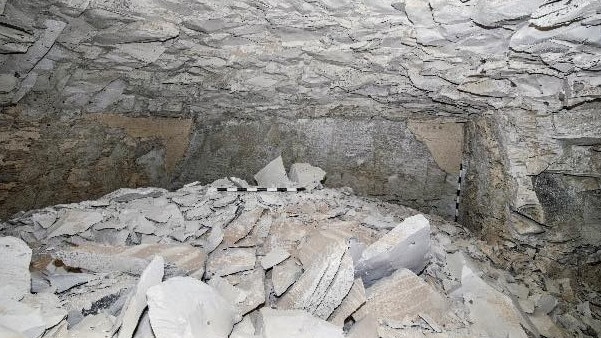
It was a find that – almost – completed a story 3500 years in the making: the last undiscovered tomb of the pharaohs of the great and powerful 18th Dynasty.
Founded in 1550BC, the dynasty signified the beginning of the New Kingdom of Egypt during which the rule of Thebes was extended over an even greater empire. At its height, this land would run from the sixth cataract of the Nile up to the Mediterranean, across Sinai, through Palestine and into Syria.
At the head of this empire was the 18th Dynasty, a family that might be described diplomatically as having “very close sibling relationships”.
In fact, the levels of incest were such that it is astonishing that the dynasty not only survived but became populated with names that resonate to this day.
Thutmose’s half-sister-cum-wife Hatshepsut was the first of many famous names in the dynasty. Others include Akhenaten, Nefertiti and Tutankhamun.
Yet Thutmose has remained something of a mirage in all of this.
We know little about him and, as if to highlight this, as all the other pharaohs’ graves were found, his was the one that eluded archaeologists. Until now.
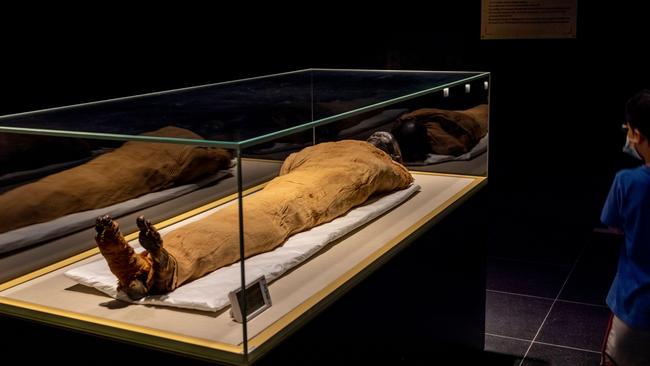
The most exciting discoveries have the dullest beginnings. Litherland described it as “12 years of quiet in the Western Wadis”.
Every autumn and winter, the team would head out to the sand to dig through the debris of the past, diligently, professionally, making no headlines.
Then, in 2022, chance struck as they cleared flood debris in a section called Wadi C.
“Dr Piers told us we would work here for two weeks but chance kept us at the site for three years,” says Amal Ewida, the team’s photographer.
Having cleared 2m, they were hitting bedrock – save for one corner where the ground was soft. This, in and of itself, was not promising.
“It was below two waterfalls and at the bottom of a slope fed by a third waterfall,” Litherland says. “It was not a very sensible place to have located a tomb and, as the area was formerly associated with royal women, we certainly could not have predicted we would find a king’s tomb. We have been very, very lucky indeed.”
They committed to digging until they knew there was nothing there, and found more flood debris, set hard with limestone.
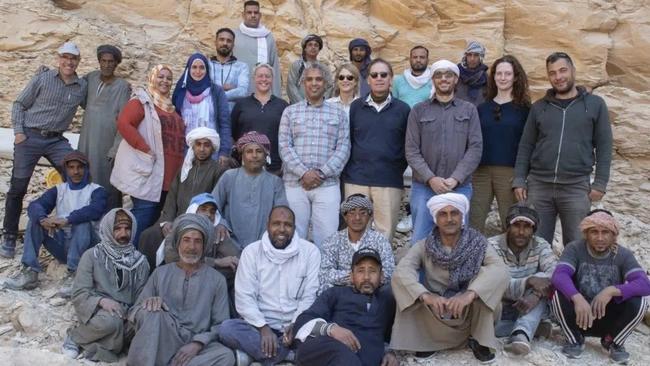
After two weeks of chipping away, something intriguing emerged: a staircase was found and an entrance to what was clearly a tomb.
It was named Tomb C4 and the discovery was announced but there was, as yet, no reason to get overexcited and still much work to do.
More debris barred the way and then it became clear that the ceiling and walls had collapsed. This might have been a dead end, but another corridor was found parallel to this main entrance.
It too was filled with residue from another flood, but above it was a small gap, 75cm by 40cm, that offered a way in.
Chief archaeologist Rabee Eissa went in with Litherland, as did inspector Saddam Mohamed, foreman Mohamed Sayed Ahmed and one of the workmen, Heraji Sayed Ahmed.
After an unpleasant 10m crawl, they found themselves in the large chamber.
The sight that greeted them stirred excitement and confusion. The chamber’s size and the clear indications that this was not the only chamber in the tomb were thrilling.
However, surviving pieces of plaster showed that this had been decorated, and this did not fit with what they were expecting.
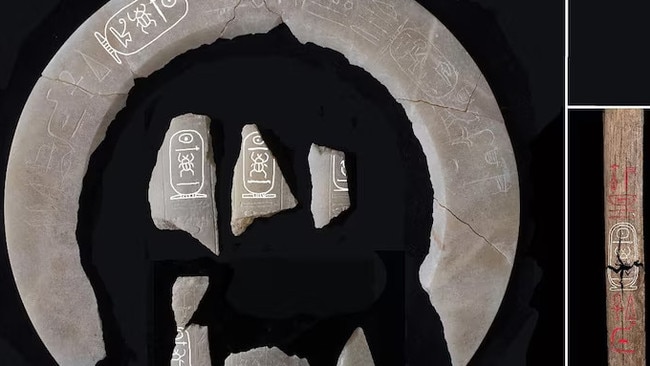
“This was supposed to be an area in which royal women were buried – and their tombs in the 18th Dynasty were never decorated,” Litherland says. “So we were deeply puzzled but aware that we had found something unexpectedly important.”
The signs were pointing to not just a royal tomb but one of a male, which meant it could be a pharaoh’s. Only when Litherland emerged from the narrow tunnel and back into the light did the scale of the find hit him.
“I am sure there is some physiological explanation for the mixture of relief and elation which overwhelms one,” he says. “My wife was waiting outside and asked what we had found and I couldn’t speak because I was choked up with tears.”
The chamber was filled with broken plaster and other detritus, and contained within was the key to the room’s purpose. The remains of alabaster vessels were found, inscribed with hieroglyphs. Painstakingly, they were put together and deciphered.
“The puzzle pieces were not yet complete,” says Mohamed Abd el-Baset, the chief surveyor. “Last season and this season, the puzzle pieces of the alabaster vessel were completed, and the name of King Thutmose II – along with his titles – appeared.”
It says: “The god’s wife and wife of the king, Hatshepsut, made this monument/object for her brother, the perfect god, lord of the two lands.”
Eissa says: “This confirmed with 100 per cent certainty that the tomb belongs to Thutmose II.”
The tomb is bare of treasures, which would usually be indicative of grave robbers and that would mean the artefacts were almost certainly lost to time. However, the evidence suggests another, more tantalising explanation: that the items were relocated after the tomb flooded.
“Because we did not find the stone sarcophagus, canopic jars or ushabti figurines, which are essential to the funerary practice, this means the contents were moved,” Eissa says. “The people most concerned with the king’s mummy were his family, and they were the ones who made the effort to save the tomb.”
Abd el-Baset says: “What supports the idea that the contents of the tomb were relocated during the 18th Dynasty is the evidence of dragging marks left by the stone sarcophagus on the tomb’s steps. Tomb robbers usually do not steal stone sarcophagi because they are heavy, and stone sarcophagi were not relocated with mummies.”
So, the story is not over. The king’s mummy was discovered in 1881, though there is debate as to whether it had been correctly identified. There is optimism that further work in the area will produce the missing treasures and settle debate over the mummy of Thutmose II.
Litherland will likely be returning to Egypt for a 13th year – one he hopes will bring new discoveries
THE TIMES


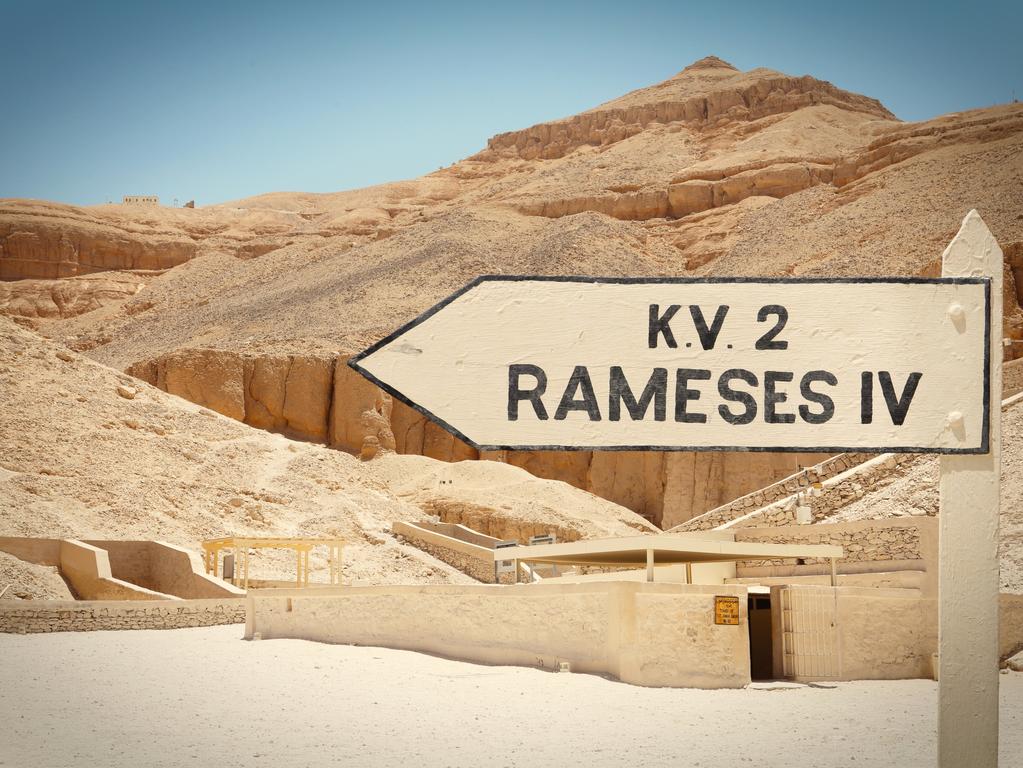


To join the conversation, please log in. Don't have an account? Register
Join the conversation, you are commenting as Logout